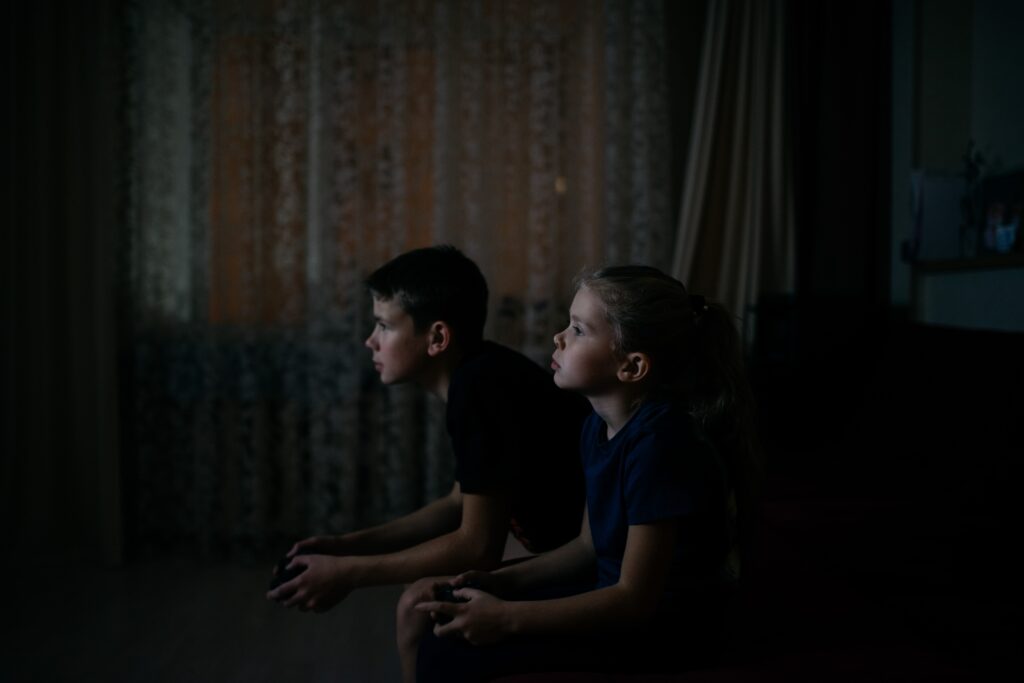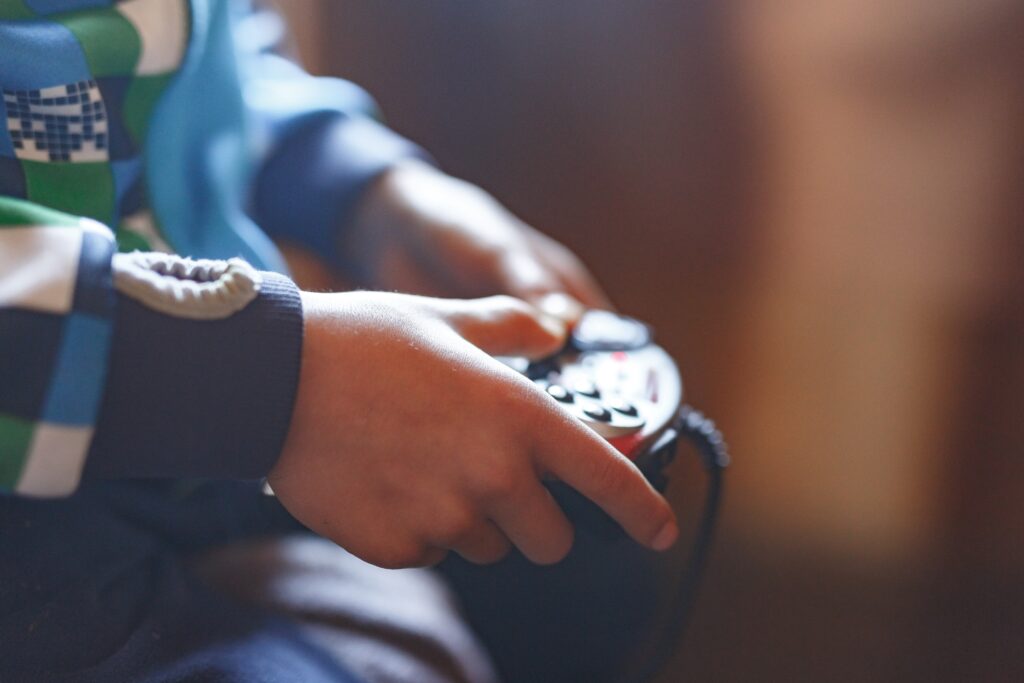
Recently Adam Grant, a thought leader with over one million followers, posted his thoughts on this study:
Video gaming may be associated with better cognitive performance in children
This study of “nearly 2,000 children found that those who reported playing video games for three hours per day or more performed better on cognitive skills tests involving impulse control and working memory compared to children who had never played video games.”
Grant’s conclusion? “Video games are exercise for the brain.”
Parents showed up in the post comments in full force. The parents with gamers sighed relief and walked away from their guilt. The parents who are leery of gaming defended opposing studies and examples stating the downfalls of gaming.
Grant came back with this: “Rumors of video games are vastly exaggerated. 101 studies, 106K kids and teens; video games have negligible impact on grades, depression, attention, aggression. Only 3.1% show problematic behaviors—which are more likely symptoms of mental health issues than causes.”
And yet there are gaming rehabs throughout the world and hundreds of articles about gaming addiction. You might remember our parent night with my friend Spencer Sessions who considered himself a gaming addict at one time—it actually happens!
It’s no wonder we’re all confused.
As a fan of Grant myself, (I own several of his books), I wanted to give a more thoughtful response to his statement and answer all the questions that came in from our Better Screen Time community.
It’s true that video games have proven benefits such as helping veterans with PTSD, post-surgery and burn victim pain management, and social connection.
The reality is, the risks and benefits of gaming aren’t black and white, especially for children. Like most uses of technology, how we use it matters and the effects of gaming vary from person to person.

As we’ve worked with and observed families who allow gaming, we’ve noticed certain characteristics of those who have healthy tech boundaries and those that don’t. To be honest, some parents do all the things right and it still goes wrong. #facts
The important thing is to not let fear drive your decisions, but to make an educated, purposeful decision that feels true to your family’s values.
Here are some of the downsides that Adam Grant overlooked…
When Gaming Goes Wrong
When gaming goes wrong it’s usually because:
- There is little to no parental oversight. There are no limits or, if limits are in place, they are not enforced.
- Video games are used as a babysitter for younger kids or an escape for teens.
- The content is not age appropriate (or appropriate at all!).
- Gaming is often in isolation.
- Video games become a daily necessity or escape rather than an occasional fun diversion.
- Kids and teens play with and interact with strangers online.
We don’t need studies to tell us any of this because we hear it directly from parents.
Gaming Guardrails Used by Tech-Healthy Families
As we coach and help many families on screen time, we’ve noticed that families that manage gaming well tend to have gaming guardrails that look something like this:
- Parent involvement. They play alongside their children.
- Picky about content. They check game ratings and are okay saying no to objectionable games.
- Post a plan. They have defined limits and clear expectations and their kids help create the family tech plan.
- Parental controls. They use, and are consistent with, time limits.
- Fun diversion vs. daily need. They recognize that video games should play a small part in a child’s life.
- They aren’t afraid to say NO. Parents encourage (ahem, demand!) time outside, face to face time with friends and family, activities, and hobbies.
Not all parents want to take on this responsibility. It is a big one. But it’s absolutely necessary if you want to keep video games from taking over your child’s life.

I will also toss out the fact that it is typically one parent that has to be the screen time enforcer, and more often than not, that person is the mom. As a mom of five, I will tell you that it takes dedication and commitment to keep screens from taking over. The parent who manages screens day to day and knows his/her kid’s needs and tendencies is the real hero here who can make a better decision than any study ever will.
Our Gaming Approach
In our home we decided that if anyone were to take a real interest in gaming, we’d only allow it if Tyler were playing alongside them and it would be an occasional activity.
We’ve allowed our kids to play games on the computer here and there, but we don’t own a gaming console. It’s just not where we want to spend our time (and parenting reserves!).
Do we think video games are evil? Nope.
We also recognize that our family dynamics alter our perception. We have four girls and one boy. In general, boys gravitate toward video games more than girls.
Tyler is a software engineer and our son has similar interests and is a smart cookie! We have steered our son away from video games and toward other hobbies and interests. This includes his interest in computers where we’ve focused on coding, robotics, and drones. (All hobbies which—like video games—boost a child’s cognitive development!) It’s been a great decision for our family. We aren’t saying no to technology, we’re just prioritizing other uses over gaming.
We allow our kids to play video games at friends houses as long as they are in line with our family values. Games like Mario Kart and Just Dance are favorites, but for us they are a fun diversion we enjoy with cousins or friends once in a while.
We recognize that every family is different. Our family really values books, the outdoors, games, cooking, and conversation. Could video games be a part of our day to day? Sure. But it would take away from the things that we value more.

There is an opportunity cost for each thing we choose to spend our time on. I’ll repeat what I’ve said before: while technology has changed, what our kids need has not. There are the same 24 hours in a day and kids need what they have always needed: time outdoors, sleep, physical activity, interaction with friends and family, time to wonder, read, learn new skills, and responsibilities at home.
Could three hours of video games possibly help a child’s impulse control and working memory? According to this latest study, yes.
But let’s not forget there are thousands of other activities that can improve a child’s cognitive development (many of which offer additional benefits as well!). Using this latest study to claim that three hours of video games per day is a good idea for kids is a myopic view of a big picture.
It’s like looking at the Mona Lisa rom this perspective only:
When in reality, this is a more accurate representation of what we are looking at:
Dr. Jenny Radesky, director of developmental behavioral pediatrics at the University of Michigan Medical School commented on the study to CNN,
We can’t extrapolate these results to assume, however, that more video gaming will lead to better impulse control or working memory in non-screen contexts, such as classrooms or doing chores at home. Supportive teachers/caregivers and social-emotional skill-building approaches help with those skills in more naturalistic environments.
Video gaming may have some cognitive benefits for kids, study finds | Nadia Kounang, CNN
Again, this study is looking at a few benefits in child development and not looking at the whole child, or more importantly, YOUR child.
Gaming Risks to Keep in Mind
We acknowledge that there can be benefits to gaming, but parents need to understand the risks before deciding how gaming should be handled in their home.
- The video game industry is a billion dollar industry, and your child’s attention is their profit.
- Some platforms allow your child to interact with strangers online, which can lead to grooming, child sex trafficking, sextortion, and invasion of privacy.
- The World Health Organization does classify gaming disorder as an addictive behavior.
- Video games are not what they once were. They are accessible 24/7 with realistic, fast-paced graphics. Like all screen time, gaming can leave some kids in a constant state of hyperarousal.
- There is the chance of exposure to pornography and sexual objectification on video games.
- Gaming can take time away from developing skills crucial to healthy child development.
- Age is a factor. All age groups from infant to young adult handle screens and gaming differently.
There are real downsides to excessive gaming which you read more about in the book Glow Kids. The researchers of this study (or Adam Grant) have likely never seen these effects first-hand.

They have likely never had a mom come up to them sobbing that all her kid wants to do is play video games, or a dad who is ready to send his son off to boarding school because the gaming has gotten out of control. (Recent real life scenarios in my line of work.)
Again, we all see life through the lens of our own experiences. We need to be open to seeing it through the eyes of others and to understand that studies represent a very small lens of a much larger picture.
Questions to Ask Yourself Before You Say “Yes” to Video Games
Video games can be super fun, but there are risks. As a parent you decide if you will allow them and if you do, what your gaming guardrails will look like. Then, it’s your responsibility to show up to keep it fun and do your best to avoid the risks.
Before you say yes to video games, ask yourself:
- “For my child, do the benefits outweigh the risks?”
- “Can I work with my kids to create healthy boundaries?”
- “Am I willing to take the time to set up parental controls, to play video games with my child sometimes, and to ensure that their life stays balanced?”
- “Do I have an action plan to abort video games if they start taking over my child’s life?”
Understanding the risks, taking into account your child’s personality and family history, and taking time to prepare will help you to decide if or how video games will be present in your home.
And always involve your kids. We recommend you use our discussion guide, Creating a Tech-Healthy Family, to help guide in these essential conversations.
If you’re ready to really reduce screen time and raise kids who thrive, you’ll love our full lesson on Guardrails for Gaming in our course Creating a Tech-Healthy Family and the lesson on Managing Gaming in Untangling Teens & Tech. (Tyler helped with both!)
Let’s worry less about gaming, make a decision that feels right for our family, and connect more with our kids!
